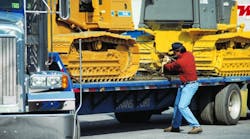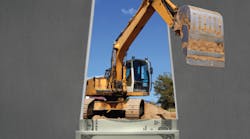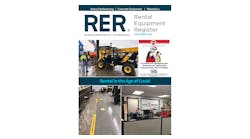In numerous articles in RER and at industry seminars, I've advocated knowing and tracking certain financial and operational metrics of your rental business. The four most basic measures to judge the performance of a rental company are revenues and revenue trends, EBITDA/cash flow percentage of revenue, payroll percentage of revenue and rental fleet metrics such as financial utilization and repairs and maintenance.
I'm happy to report that many independent rental store owners and managers call me, email me or stop me at trade functions and let me know that they've listened, are tracking the data and often want to report either their successes or challenges at achieving the industry benchmarks that I advocate. With many rental operators aware of these metrics, some have expressed an interest of going a step further, asking questions such as: How many mechanics should I have? How many sales people? How many delivery vehicles? Should I be worried about customer concentration? How much debt should I have?
Over the years, I've been blessed to work with some of the top independent rental companies in the country. I've seen their financial results, toured their facilities, met their employees, management and owners. My clients tend to be local or regional operations with total revenues ranging from $5 million to $50 million with fleet sizes of $10 million to $100 million, usually with two to 10 locations. Most of these companies compete with the major rental companies such as Sunbelt Rentals and United Rentals.
From my files, I've pulled some composite data from some of the top achieving companies to help guide other independent rental store owners in comparing their data to other successful operators. I must caution that different rental stores may not "hit the mark" on certain measures but, still achieve exceptional results as measured by their profitability or cash flow. The following guidelines relate to rental companies that derived, on average, more than 80 percent of their total revenues from rental and related sources (rental of owned fleet, re-rental of equipment owned by others, delivery/transportation, damage waiver and re-fueling charges).
Staffing/Payroll
Overall, I recommend that construction equipment rental stores maintain an overall payroll and related expense as a percentage of total revenue of between 20 percent and 25 percent. The composite for my sample was 26.2 percent of rental revenues and 21.9 percent of total revenues. The average total annual revenue per employee was $302,950 and average rental revenue per employee was $253,300.
From a staffing perspective, an interesting ratio developed. For every $1.9 million of rental revenue or $5 million worth of rental fleet (at original equipment cost or "OEC"), there was one inside sales person, one outside sales person, two mechanics and just under one administrative or management employee. In addition, there was one semi-truck driver and just under one (.75) smaller delivery vehicle driver for the same rental revenue and fleet size.
Rental related statistics
First off, let me emphasize that if your company has access to Rouse Analytics, I consider their data to be the "gold standard" in measuring much of this information. My statistics relate solely to independent rental operations and are meant to be more of a peer-to-peer comparison between independent rental stores without the data from national companies.
Average fleet financial /dollar utilization for the companies in my files was 38.1 percent and the median age of the rental fleet was 36.2 months. Just over 96 percent of rental revenue was derived from fleet owned by the company and just under 4 percent of rental revenues came from re-rent of equipment owned by others. The current fair market value estimate of these rental fleets was 66.5 percent of the OEC. I should note that many of the companies that I work with have experienced significant growth in the last several years and have purchased incremental fleet to fuel that demand. Overall, this has resulted in a younger fleet than in previous years.
Delivery charges billed were 6.5 percent of the base rental amount. Investment in transportation fleet averaged 6 percent of total rental inventory. Using the $5 million rental fleet and $1.8 million rental revenue example in the previous section, this would equate to a $300,000 investment in delivery vehicles. For most companies, this equated to one semi-tuck/trailer and one heavy duty pickup or rollback truck for every $5 million in fleet. This $300,000 investment in transportation fleet returns an average of 40 percent per year in delivery revenue or about $120,000 annually.
All of the top performing rental companies in my files charge damage waiver; the amount ranged from a low of 10 percent to a maximum of 15 percent. Damage waiver charges totaled 3.9 percent of the total billed for rental of equipment. Average damage waiver charged was 13.7 percent of the base rental amount and damage waiver, on average, was charged on 28.4 percent of tickets. The 28.4 percent seemed low to me, so I limited the stats to the top seven companies. In doing so, the percentage of tickets that damage waiver was charged on raised to 40 percent and the total damage waiver charge raised to 5.4 percent of total rental revenue.
In compiling the data, I noticed several companies had almost identical amounts of revenue from delivery and damage waiver and eliminating the same outliers regarding damage waiver, I found that damage waiver averaged 83 percent of the delivery revenue.
Regarding customer concentration, I found that the companies' single largest customer averaged 4.5 percent of total rental revenues and the top 10 customers accounted for 26 percent of total rental revenues. I generally don't worry about customer concentration unless the single largest customer is more than 10 percent of total rental revenue and the top 10 does not exceed 40 percent of total revenues.
Other financial measures
Average EBITDA was 43.3 percent of total revenues with a range of 33.2 percent to 53 percent; my standard is a minimum of 40 percent of total revenues. My suggestion for EBITDA as a percentage of OEC of rental fleet is 20 percent; this group averaged 21.4 percent.
I often get questions regarding optimal debt levels. The average for these companies' debt was equal to 38.5 percent of the OEC rental fleet and 57.8 percent of the current fair market value of fleet (most lenders require this to be 70 percent or under). Average debt was 91.5 percent of rental and related revenues and 76.5 percent of total revenues. EBITDA as a percentage of total debt was 56.6 percent; most banks measure EBITDA coverage of debt service (annual EBITDA divided by annual debt service requires of principal and interest). I did not have the annual debt service in my files regarding these companies but using a conservative average of 20 percent of the debt, the EBITDA coverage of debt service would be 2.83 to 1 (in other words, EBITDA is nearly 3 times more than debt service).
Many rental companies have banks or lenders set standards based on the EBITDA coverage and the fair market value of assets compared to total debt in loan covenants in order to maintain good standing as a borrower based on these statistics.
In summary, here are some general guidelines to measure your rental company against some top independents:
- Total annual revenue per employee: $300,000
- Total rental and related revenue per employee: $250,000
- Total payroll/Total Revenue: 22 percent or under
- Total Payroll/Total Rental Related Revenue: 26 percent or under
- For every $5 million in fleet:
- One counter person
- One outside sales person
- One admin/management employee
- Two mechanics
- $300,000 in delivery vehicles with one semi-truck with driver and just under one smaller delivery vehicle with driver
- Fleet Financial/Dollar Utilization: 38 percent
- EBITDA as percentage of Total Revenue: 40 percent
- EBITDA as a percentage of the OEC of your rental fleet: 20 percent
- Delivery income as percentage of rental revenue: 6.5 percent
- Delivery income as percentage of vehicle/trailer costs: 40 percent
- Damage Waiver as percentage of rental revenue: 5.4 percent
- Total debt equal to or less than 38.5 percentage of the OEC of your rental fleet with annual EBITDA of 57 percent of your debt.
- Total debt no more than 70 percent of the fair market value of your rental fleet.
I always tell rental store operators that there is no "one size fits all" formula when it comes to measuring your company's performance. No single operation in my files of the best run companies hit all of these measures but hopefully you will find a few metrics from the above to "pat yourself on the back" and a few to work on to improve your business.
Gary Stansberry is the President of The Stansberry Firm, LLC and specializes in business sales, fair market business valuations and operational consulting, including positioning businesses to increase their value. More information on the company can be found at www.thestansberryfirm.com. Gary can be reached at (210) 797-7368 or by email at [email protected].









